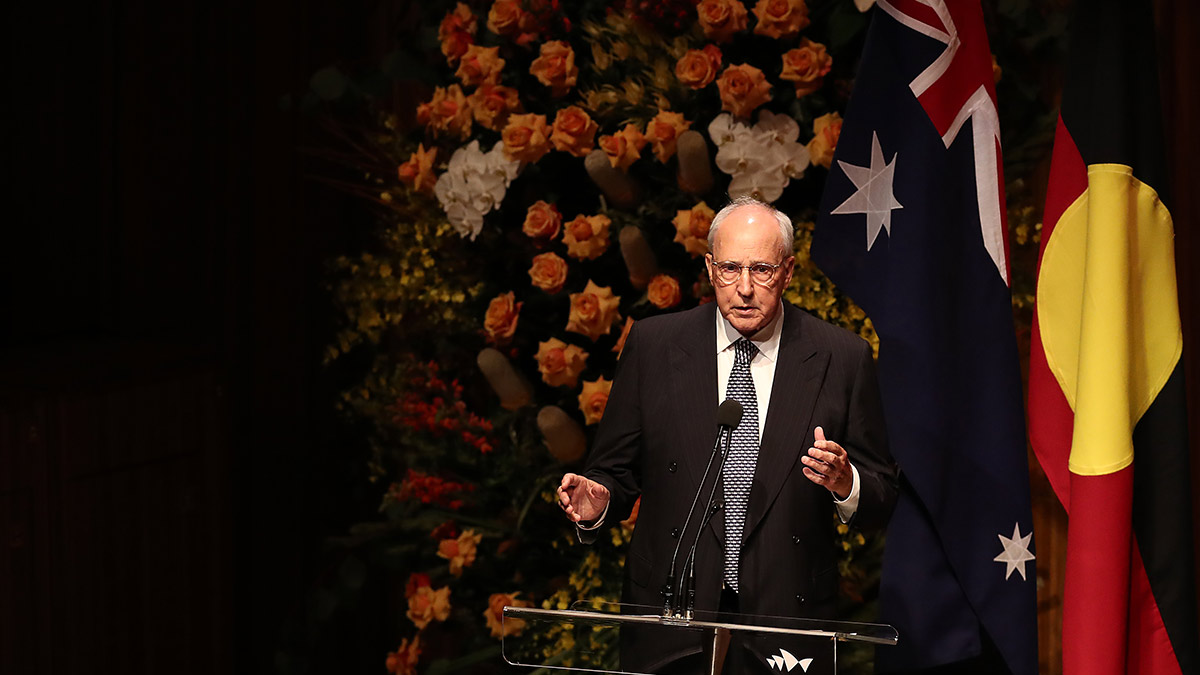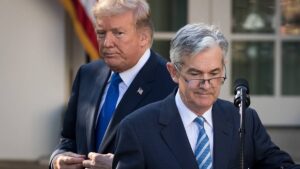Think Big: Some marquee names are weighing in on ‘Team Australia’s’ policy response

Former PM Paul Keating was one of many pundits to weigh in on the policy response from "Team Australia" this week. (Pic: Getty)
As an investment year, 2020 has been defined by policy support from governments and central banks.
October 6 is the next key date, when the RBA will make its monthly policy announcement in the afternoon.
That will be followed later in the day by the release of the Morrison government’s delayed FY20 budget.
With plenty happening on the policy front, some big names across finance, economics and politics have weighed in lately around what may (and should) happen next.
In a speech last Tuesday, RBA deputy governor Guy Debelle laid out a framework for what the central bank might do next to support growth.
Debelle didn’t mention the benchmark cash rate (which currently stands at 0.25 per cent) specifically.
However, he did flag the possibility of downward tweaks to other rate mechanisms, such as the three-year bond yield target (also 0.25 per cent).
Debelle also discussed the idea of negative interest rates, but said the evidence of their effectiveness was mixed.
The following day, Westpac chief economist Bill Evans said Debelle’s remarks amounted to a “fairly clear hint” the RBA would cut rates next month.
Not into negative territory, but a small move lower to 0.1 per cent (with a commensurate cut to the three-year bond yield target).
In an indication of how twitchy markets are to possible changes in RBA policy, yields moved lower as bonds rallied in the wake of Evans’ note.
(One by-product was that Australia’s Office of Financial Management got a discounted interest bill on a $66bn government bond issue that same day, as yields fell).
A number of analysts and commentators then offered a counterpoint to Evans’ view, arguing the RBA is more likely to postpone possible rate changes for another month.
Their argument was that by waiting until November, the central bank will be able to announce its policy change with a clearer understanding of the government’s spending plans.
‘Team Australia’
With both policy announcements falling on the same day, there’s also some speculation the government and the RBA will implement a coordinated policy plan.
In other words, a repeat of the “Team Australia” emergency response in March, when the RBA, the government and bank regulator APRA all announced drastic measures to support the economy.
The UBS economics team reckons a coordinated response is “plausible”, and recently placed a 50/50 likelihood on the RBA cutting rates further.
For his part, former Prime Minister Paul Keating also weighed in with an op-ed in the SMH, where he called Debelle’s speech “meandering” and said the RBA wasn’t doing enough.
Instead — with a battered economy and low inflation — the main goal of central bank policy should help facilitate higher fiscal spending.
“Mountainous sums of it,” Keating said.
While the term mountainous can be open to interpretation, research from CBA this week suggests the government is on track to post a budget deficit of $250bn in the 2021 financial year.
Back in July, RBA governor Philip Lowe pushed back against the idea of more unorthodox support measures such as the direct financing of government spending.
He argued the end result of such a policy would either be higher taxes or higher inflation.
Either way, in terms of the central bank’s primary response lever to the economic cycle — interest rates — speculation about what it does next is taking place at the margins.
It’s already reduced rates to (almost) zero, and aside from more technical response mechanisms it’s limited in what it can do next.
Instead, recent evidence suggests the conversation is shifting more towards fiscal spending policies as the primary driver of Australia’s post-COVID economic recovery.
Related Topics
UNLOCK INSIGHTS
Discover the untold stories of emerging ASX stocks.
Daily news and expert analysis, it's free to subscribe.
By proceeding, you confirm you understand that we handle personal information in accordance with our Privacy Policy.








